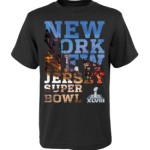Everyone loves a good makeover story, often for different reasons. The ultimate “reveal” we eagerly anticipate can be a source of awe or of awkwardness, depending on the subject. Target of admiration or butt of jokes – it’s still a story, right?
When the McDonald’s Corporation announced last week that a newly hip and updated Ronald McDonald was ready to take the promotional and social media world by storm, I have to admit I cringed. The promotional photos, taken to show off Ronald 2014’s new wardrobe – rugby shirt, vest, and cargo pants to replace his trademark yellow jumpsuit – proved the old “lipstick on a pig” adage, except in this case, we see that you can put trendy pants on a clown…but he’s still a clown. (Incidentally, the big red shoes and matching hair remain intact.)
This raises two questions.
1) Who are they trying to reach?
In 1966, when Ronald McDonald first became the company’s national spokesman, clowns and kids went together like, well, burgers and fries. But in all honesty, when was the last time your child asked to have a clown at his or her birthday party? Or ran up to one at an event just busting to get a hug? This week I saw a clown portrayed in a child’s art project at one of our local schools; part of an assignment for a French class, the clown stood next to a child whose thought bubble proclaimed “J’ai peur!” (I’m scared!)
Not to beat up the clown industry. It’s just that for a national chain of restaurants which has put several makeover strategies in play in recent years, it seemed an odd move, sentimentality aside. Will Ronald be hocking the McCafe Coffees to urban professionals as well?
2) How does this fit into the company’s brand?
Since 2011, McDonald’s has made bold moves to shift their stores toward a more upscale, cafe-style atmosphere. Earth tones replacing primary colors, faux leather chairs in place, even an occasional fireplace welcoming customers to sit and relax for awhile. At the time of the campaign’s launch, the McDonald’s Corporation described the makeover as a billion-dollar undertaking. Just three years later, Ronald’s redux seems misplaced within this vision, seemingly aimed at the ball-pit crowd more than the java & laptop customers they have been targeting in recent years.
Not that Ronald should disappear. After coming under fire for using child-targeted marketing to push unhealthy food not long ago, the McDonald’s Corporation had limited the character to supporting Ronald McDonald House Charities, a phenomenal organization which helps more than seven million families per year who are dealing with pediatric illnesses. Helping children feel better by keeping families together seems like a perfect fit for the Ronald McDonald character, especially when the charity arm of the company is so branded with the name.
And yet, here he is at 51 years old, hitting the promotional and social media circuit sporting a new look which includes a “whimsical red blazer” for particularly spiffy occasions. Yes, that wording comes directly from the company’s announcement, along with the fact that Ronald’s new duds were designed by Tony Award winning theatrical designer Ann Hould-Ward of “Beauty and the Beast” fame. They’ve certainly put a lot into this campaign.
It’s a gamble, to be sure. How will midlife crisis Ronald fit in with the overall branding proposition? It will be interesting to gauge response, starting with this week’s bi-annual worldwide convention for McDonald’s franchisees, at which the company will introduce the new concept.
At Kovak-Likly, we know that it truly is all about the brand. Marketing strategies need to be built on a solid platform so that its pieces make sense and fit together. We work with our clients to determine exactly what that platform needs to be, and then walk through the steps that follow, giving each the focus and attention it needs to keep the brand in play.
If you would like to talk to us about how you can best determine your brand and share it with your target customers in a way that is both impactful and consistent, we’d love to talk to you. No big red shoes required.
-BML






